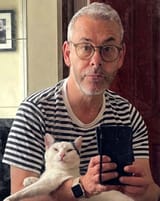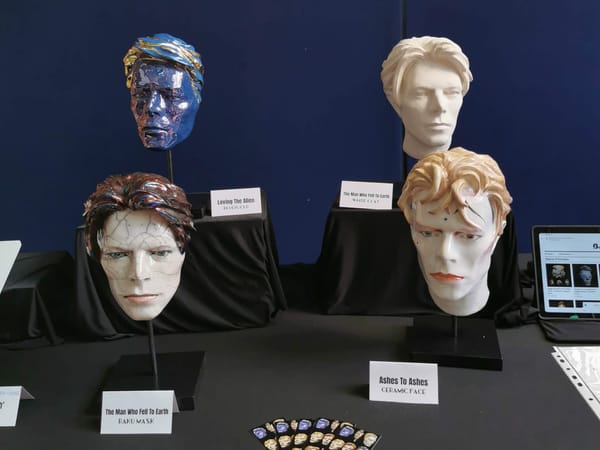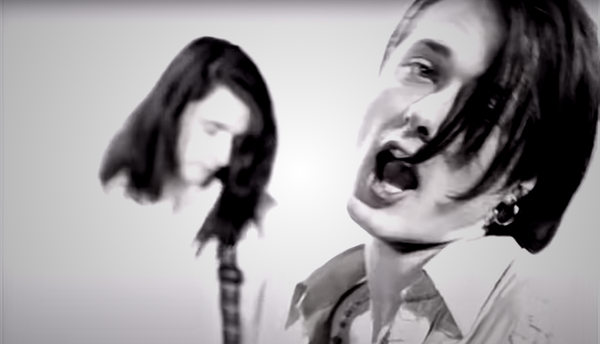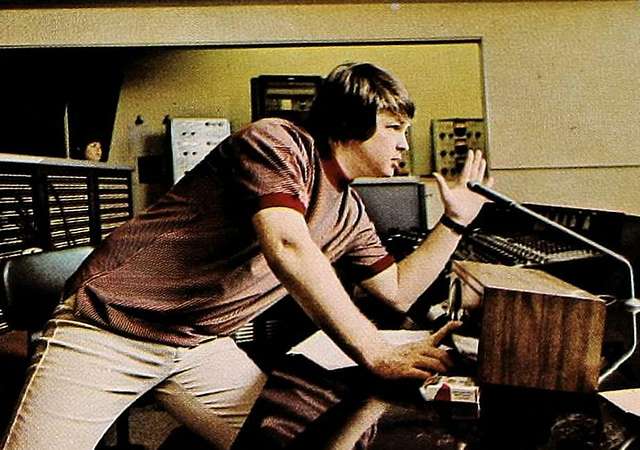The wild blue yonder
Joni's archives give us an opportunity to feel the jeopardy and wonder of one of the 20th century's most extraordinary solo odysseys
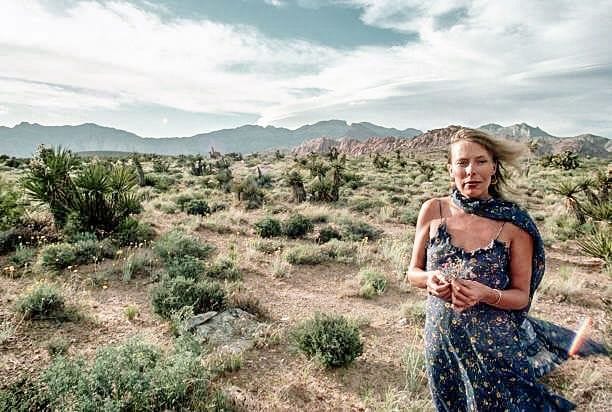
Joni Mitchell Archives, Vol. 4: The Asylum Years (1976-1980)
(Rhino)
The 1930s schoolbus that Ken Kesey bought for the Merry Pranksters’ phantasmagorical 1964 road trip across the USA had a simple destination: FURTHUR, painted in psychedelic Playbill script above the windshield. It’s not clear that the Phydeaux III, the reconditioned Greyhound that Dylan hired from Frank Zappa in 1975 for the Rolling Thunder Revue, ever declared its own destination so boldly, content instead to circle round the New England backroads and creative dead-ends of Bob’s own mid-70s malaise.
But right up front on the Phydeaux, sat next to the driver so that her eagle eyes could mainline the fine white lines of the freeway, Joni Mitchell seemed to know exactly where she was going. At the end of 1975, as her contemporaries gave up the ghost or were laid waste by punk, she was embarking on one of the most extraordinary artistic solo odysseys of the twentieth century. Far from Saskatoon, Laurel Canyon, Canada and the United States, beyond folk, rock, jazz and blues, she was out on on her own strange adventures into the wild blue yonder.
You can follow this fantastic voyage on the recent Joni box set, The Asylum Albums (1976-1980), with its remasters of Hejira, Don Juan’s Reckless Daughter, Mingus and Shadows and Light - a well documented journey that took her from Californian highlife, down various lost highway into strange, uncharted musical realm, and left her, to David Geffen’s chagrin, pretty much in the commercial wilderness. This companion volume of archives gives us an opportunity to hear the roads not taken, the hesitations, to feel the jeopardy at each artistic crossroads and experience the risk and wonder of the journey anew.
Across seven hours, six discs and 98 tracks this is an astonishing bounty. Live recordings that capture some of the paranoid, goofball rally of Rolling Thunder; documents from the abortive 1976 tour in support of Hissing Lawns; an entire demo of Hejira, recorded in March 1976, before the miraculous arrival of Jaco Pastorius, featuring “Coyote” as part of an epic 10-minute psychic travelogue, segueing straight into “Don Juan’s Reckless Daughter”. There’s a protean early sortie to the source of the “Paprika Plains” delta; takes from the early sessions of Mingus; a beautiful, previously unreleased instrumental, “Sue and the Holy River”, dedicated to Mingus’s widow; and a sensational 1979 Forest Hills concert, surpassing the Shadows and Light live album, featuring the uncanny dream team of Pat Metheny, Jaco Pastorius, Don Alias, Lyle Mays and Michael Brecker.
Once again there are extensive liner notes, featuring an extended conversation between Joni and her latter day amanuensis, Cameron Crowe (recently rumoured to be starting a new Joni biopic starring Meryl Streep). Perhaps the most telling moment is when Crowe asks about the song “Travelling”, recorded live in February 1976, an early version of what would become Hejira’s title track. Minded to remove the track from the release, Joni listens again and comments “Changed that line . . . that line got better . . . so did that one . . . [song ends]. The writing is better in the finished version.” Crowe is left to plead the case to include it on the box set, if only for historical interest - which she grudgingly concedes.
Years ago, after first hearing Blue, a staggered Kris Kristofferson was moved to comment "God, Joan, save something of yourself". But it’s a sign of Joni’s pride and artistic confidence that she’s willing to bare her soul, under her own admirably strict conditions - her early sketches and drafts remain resolutely beyond the pale. You’re left to wonder what a Joni box set might look like if it were left to us insatiably curious fans rather than her own sense of artistic perfectionism.
“Coyote”, famously, was composed on the road, on that Rolling Thunder bus in the first snap and crackle of her electric encounter with Sam Shepherd. There’s an irresistible photo online of her notebook, festooned with deletions and annotations - “BLT” in an early draft becomes “scrambled eggs” (to rhyme with “waitress’s legs” - the placeholder rhyme Paul McCartney once abandoned for “Yesterday” now redeemed into realms of glory).
If you have a spare afternoon, and can find your way around the dark web of FLAC bootlegs, you could piece together a timeline of its day-by-day composition. On 26 November in Augusta, Maine she announces “I wanna lay three new movies on you. It’s like seeing a picture show for the first time….Looking at the daily rushes. This one was just written yesterday…” before a bold first canter through the first two verses. (Ironically Shepherd had been hired to be the scriptwriter for the proposed film of Rolling Thunder; in the course of a four minute movie-in-song, Joni had rendered him redundant).
Five days later, over two dates in Toronto, she’s added a third verse, jump-cutting from burning barns to rocking dancefloors, and fine-tuned her phrasing. Two days later in Montreal, with the addition of the coffee-shop scene and the flashback to the Bay of Fundy, the song is complete. But frustratingly, this final draft is the only one the archive chooses to include. Though there’s a take of “Woman of Heart and Mind” from a stop-off at Gordon Lightfoot’s house on 30 November, there’s no sign of the imperious “Coyote” recorded with Bob Dylan and Roger McGuinn from the same session.
What we do get, by recompense, is a fascinating live performance from February 1976, where “Coyote” runs uninterrupted, straight into “Don Juan’s Reckless Daughter”, a song ultimately saved for its own album, not released until December 1977. Once again, Joni’s impulses were right. Though both are evidently cut from the same source materials, “Don Juan” is the cooler song, emotion recollected in tranquillity and subject to her own schematic bird’s eye analysis, while “Coyote” is the simmering hotplate of desire.
Joni’s editorial wisdom tends to be borne out throughout. The acoustic demos of Hejira, featuring early takes of “Dreamland” and “Talk to Me”, rather than “Song to Sharon” and “Refuge of the Roads”, are interesting (chiefly for an early version of “Amelia” with subtly different lyrics, and a take on “Black Crow” featuring sensational scat backing vocals) but dim beside the pale fire of the recorded album, where Larry Carlton’s guitar and Jaco Pastorius’s bass give wings and and claws to these rather earthbound versions.
The most startling inclusion might be an eerie 12 minute piano improvisation, “Save Magic”, that long-time producer Henry Lewy saved for posterity. It captures Joni heading out towards the “Paprika Plains”, playing piano again for the first time in three years, and you can practically hear the music flowing back into her fingers, like a river reborn after a long drought.
Nevertheless, frustrations at what’s missing from the box abide. Devotees have long treasured bootleg of the early Mingus sessions recorded with Charlie’s preferred crew of jazz greats, before Joni re-recorded with her own band of Jaco Pastorius, Herbie Hancock and Wayne Shorter. But precious little of this material appears here, save for a tantalising Gerry Mulligan solo on an early “Sweet Sucker Dance” (Joni herself acknowledges it’s better than the version on record, but presumably this material is being reserved for the Joni’s Jazz collection that she hints at in the liner notes).
The final discs give a taste of where Joni was setting her compass back in November 1975 at the front of the Rolling Thunder bus. The concert recorded at Forest Hills Tennis Stadium at the end of August 1979 features both her Pat Metheny-led jazz band (extending “Amelia” into an extravagant, extraterrestrial flight of fancy, and giving Jaco free-rein to reintroduce Joni to Jimi, via an improv fantasia on “Third Rock from the Sun”) and the Persuasions, bringing her back down from the stars to the sprung wooden dancefloor for a rollocking “Why Do Fools Fall In Love?”. Like the box set as whole, it’s magnificent full-spectrum Joni, fulfilling the goal she she shared around this time with Down Beat magazine (practically the only journal to give Mingus a fond review): “I want the full hyphen: folk-rock-country-jazz-classical . . . so finally when you get all the hyphens in, maybe they'll drop them all, and get down to just some American music.”
